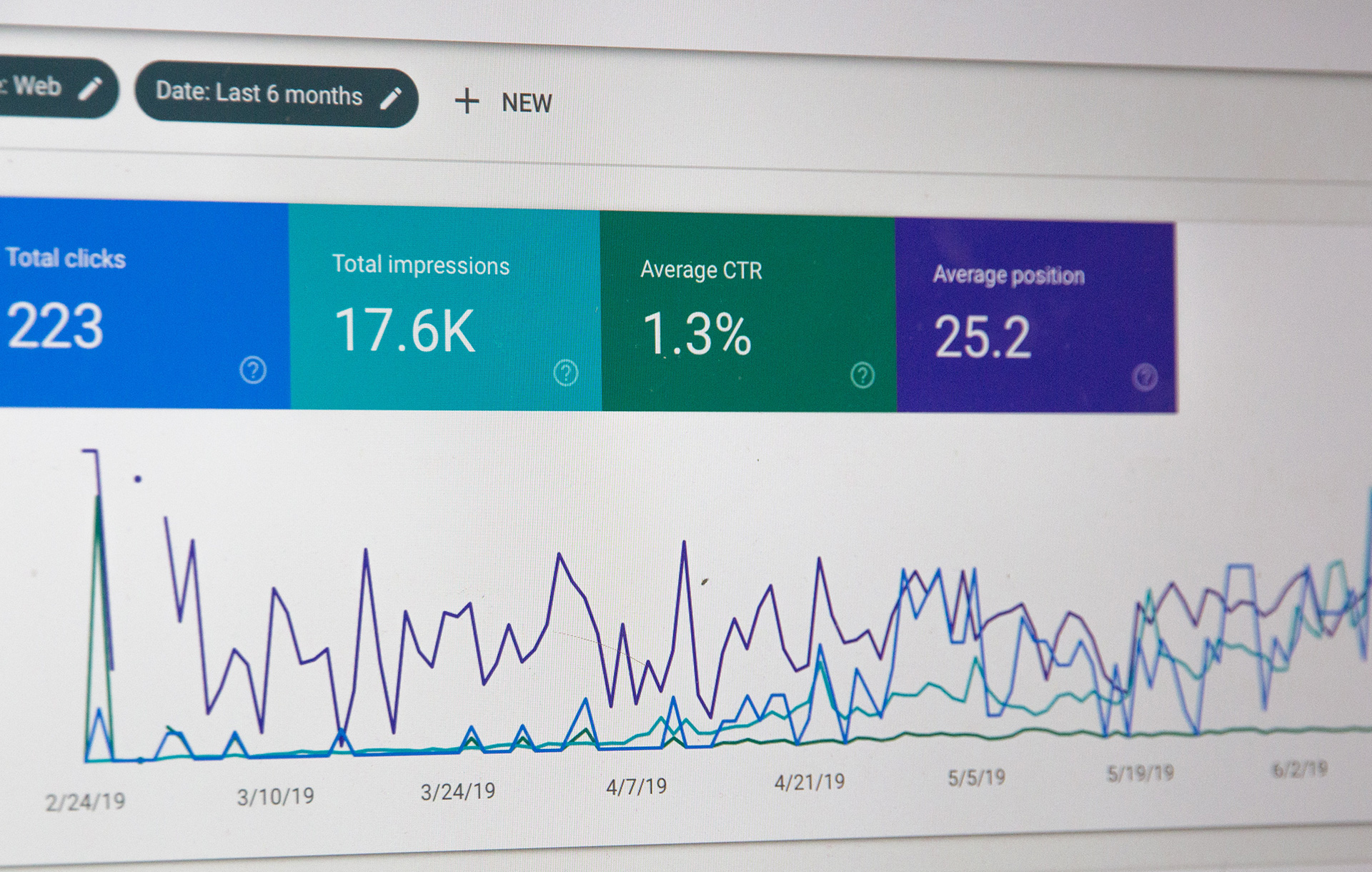How to Create Strong Sales and Marketing Alignment
Salt and pepper… Batman and Robin… Gin and tonic… Mickey and Minnie…
Yes, you’ve probably guessed it; I’m listing things that go together perfectly! And, there’s another duo we can add to this list:
Sales and marketing!
Now, you may have different departments for sales and marketing within your business. Hey, you may even outsource one and keep the other in-house! That’s absolutely fine, but they still need to be considered a pair, as when they come together, that’s when the magic truly happens.
Understanding Sales and Marketing
Sales and marketing are like two sides of the same coin, each playing a unique yet complementary role in the customer journey.
Marketing focuses on creating awareness and generating interest in a product or service. It's about storytelling, creating a narrative that resonates with potential customers, and nurturing them until they are ready to make a purchase.
Sales, on the other hand, is about converting this interest into action, guiding potential customers through the decision-making process to a successful transaction.
The significance of sales and marketing alignment cannot be overstated. When sales and marketing teams operate in silos, the result is often a disjointed customer experience and missed opportunities. In contrast, a well-oiled sales and marketing machine can lead to improved customer retention, higher conversion rates, and increased revenue.
To underscore the importance of this alignment, consider these statistics:
- Organisations with strong sales and marketing alignment achieve up to 20% annual growth rate, compared to a 4% decline in revenue for those with poor alignment.
- Additionally, companies with aligned sales and marketing teams see 36% higher customer retention rates and 38% higher sales win rates.
What Does Sales and Marketing Alignment Refer To?
At its core, sales and marketing alignment, commonly referred to as smarketing, is about ensuring that both teams are working towards common goals, using consistent messaging, and sharing insights and data to support each other's efforts.
Bringing sales and marketing management together involves several key components:
1. Shared goals and metrics
Both teams should have a clear understanding of the business’s objectives and how their individual goals contribute to the larger mission. By establishing shared KPIs, teams can ensure they're working towards the same outcomes.
2. Consistent communication
Regular, open communication between sales and marketing is crucial for sharing insights, feedback, and updates. This can take the form of regular meetings, shared dashboards, or collaborative tools.
3. Mutual understanding
Each team should have a thorough understanding of the other's roles, challenges, and contributions. This can be fostered through cross-training or joint strategy sessions.
4. Integrated processes
The customer journey should be seamless, with marketing efforts smoothly transitioning into sales interactions. This requires integrated processes and systems that enable a unified approach to customer engagement.
5. Data sharing and analysis
Leveraging shared data and analytics can help both teams understand customer behaviour, measure the effectiveness of their strategies, and adjust their approaches based on real insights.
The Significance of Sales and Marketing Alignment
Imagine sales and marketing as dance partners. When they move in harmony, the performance is captivating, drawing everyone's attention. But if they step on each other's toes, the dance falls apart. That’s the perfect way of highlighting the importance of sales and marketing alignment. It’s a partnership that, when done right, can lead to remarkable results.
Why It Matters
This alignment isn't just about making things smoother internally; it's about resonating with your customers in a way that feels genuine and unified. When sales and marketing sing from the same hymn sheet, it shows. Customers get consistent messages, experiences that feel tailored and thoughtful, and interactions that build on each other, making their journey with your brand feel like a well-narrated story rather than a series of disconnected episodes.
Here's what happens when sales and marketing align:
- Enhanced customer experience - Customers no longer bounce between disjointed messages and strategies. Instead, they enjoy a coherent journey from the first touchpoint to the final sale, which feels personal and well-thought-out.
- Increased efficiency - When teams work together, there's less duplication of effort and more sharing of insights and data. This synergy not only saves time but also boosts productivity, allowing your teams to achieve more with their resources.
- Boosted revenue - Aligned teams lead to an aligned strategy, targeting the right customers at the right time with the right message. This targeted approach can significantly increase conversion rates and, subsequently, revenue.
A Symphony of Success
Think of a successful rock band: the guitarist and drummer may play different instruments, but they're both essential to the music. They listen to each other, adapt, and when they're perfectly in sync, the music they create is powerful. Similarly, when sales and marketing align, they create a symphony of success that resonates throughout the entire organisation, amplifying growth and fostering a culture of collaboration and achievement.
Signs Your Sales & Marketing Need Alignment
Sometimes it's clear that your sales and marketing teams are out of sync, but other times, the signs are more subtle.
Here are a few indicators that it might be time to fine-tune the relationship between your sales and marketing teams:
- Mismatched messages - If your marketing materials promise one thing and your sales team says another, it's a classic sign of misalignment. This not only confuses customers but can also erode trust in your brand.
- Leads are falling through the cracks - If there's a consistent pattern of leads not being followed up on or a lack of clarity about which leads are qualified, it's likely that your sales and marketing teams are not on the same page.
- Frustration in the ranks - Pay attention to the mood music within your teams. If there's frustration or finger-pointing between sales and marketing, it's a sign that alignment is off.
- Data discrepancies - If your teams are not looking at the same data, or interpreting it differently, this is a common reason behind sales & marketing misalignment.
- Silo mentality - If sales and marketing are operating as separate entities, rarely communicating or sharing insights, you're missing out on the benefits of a united front.
Proven Ways to Forge Strong Sales and Marketing Alignment in 2024
Creating a seamless alignment between sales and marketing requires practice, communication, and a shared vision.
Here are some sales and marketing alignment steps to help you get started.
1. Set Common Goals
Establish shared objectives that both sales and marketing can work towards. These could be revenue targets, lead generation numbers, or customer satisfaction scores. When both teams have a shared finish line, collaboration becomes natural.
2. Foster Open Communication
Encourage regular check-ins and updates between the teams. Whether it's weekly meetings or shared digital platforms, creating a space for dialogue ensures everyone is aligned and aware of ongoing initiatives.
3. Create Unified Content
Marketing should work with sales to develop content that not only attracts leads but also helps close deals. Sales insights can provide valuable input into what resonates with customers, tailoring marketing efforts to be more effective.
4. Leverage Technology
Use CRM systems and other tools that enable data sharing and visibility. When both teams have access to the same information, it becomes easier to align strategies and actions.
5. Celebrate Success Together
Recognise and reward joint achievements. Celebrating shared successes fosters a sense of unity and emphasises the value of working together.
Achieving Alignment: Common Challenges & Solutions
While the goal is clear, the path to sales and marketing alignment can have its hurdles. Here's how to overcome some common challenges:
Challenge: Communication Gaps
Solution: Implement regular cross-team meetings and use collaborative tools to ensure consistent communication.
Challenge: Differing Metrics
Solution: Agree on a set of shared KPIs that reflect both sales and marketing contributions to the business goals.
Challenge: Lack of Mutual Understanding
Solution: Organise job shadowing or cross-training sessions to help team members understand each other's roles and challenges.
Challenge: Misaligned Strategies
Solution: Establish a joint planning session to align on strategies, ensuring that marketing campaigns and sales approaches are synchronised.
Harmonising Sales and Marketing for Success
As we've explored, aligning sales and marketing is not just a strategic advantage; it's an essential component of modern business success. When these teams move together in harmony, they create a customer experience that's not just effective but also memorable, building a foundation for long-term loyalty and growth.
Are you ready to align your sales and marketing teams for unprecedented success? Contact Appnova today, and let's make 2024 the year of unified growth and unparalleled achievements!
Subscribe To Us

















































































.jpg?mw=310)

































































![The impact of online reviews on your business [Infographic]](/-/media/The-impact-of-online-reviews-on-your-business.jpg?mw=310)

![10 latest trends in digital marketing for beauty brands [Part.2]](/-/media/Appnova/Blog/ScreenShot20151026at1500471940x567/10-latest-trends-in-digital-marketing-for-beauty-brands-Part-2.jpg?mw=310)
![10 latest trends in beauty web design and digital marketing [Part.1]](/-/media/Appnova/BannerImages/18376519151_bbeaa6dafc_b-1/trends-in-beauty-web-design-and-digital-marketing/10-latest-trends-in-beauty-web-design-and-digital-marketing-Part1.jpg?mw=310)


























![15 crazy things people search on Google [Infographic]](/-/media/crazy-things-people-search-on-Google.png?mw=310)



![How to LOSE Twitter followers in 15 ways [Infographic]](/-/media/Appnova/Blog/08-internal-768x534.jpg?mw=310)
















0.Comments